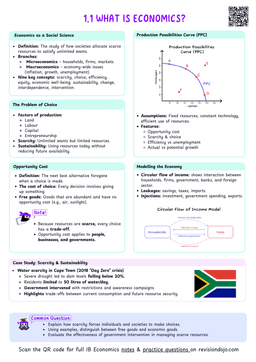Pigouvian Taxes
Pigouvian taxes
Form of tax imposed on activities that generate negative externalities.
- Pigouvian Tax is a method used by governments to correct negative externalities as:
- It makes the production of the good for a firm more expensive (increases costs of production).
- Hence, this causes a decrease in production of the good (moves the curve towards allocative efficiency.

In the diagram above, the following is observed:
- An upward shift of the MPC curve towards the MSC curve.
- This will decrease the production or quantity from $Q_m$ until it reaches the socially optimum level $Q_{opt}$.
- In order to correct the externality fully, the tax has to be equal to the externality.
- Otherwise, the MPC will be closer to, but not at MSC, leading to a lower externality and market failure.
Carbon Taxes
Carbon Tax
A carbon tax is a tax which is imposed on per unit of carbon emitted.
- With carbon emissions being one of the most pressing environmental issues nowadays, carbon taxes are induced to combat the issue.
- This tax makes it more expensive to use fossil fuels which emit carbon, as the quantity of emissions are taxed, leading to higher costs of production.
- Therefore, firms decrease their use of fossil fuels by switching to alternatives, which helps preserves the environment.

Observing the diagram above:
- The introduction of a carbon tax helps shift the MPC curve to the MSC curve.
- However, as there are alternatives to carbon emitting fossil fuels, which do not get affected from carbon tax, a lot of firms may switch to those alternatives.
- Hence, firms still pollute the environment, but by a lower factor, which is represented by the shift from $MSC_1$ to $MSC_2$
- Therefore the externality may not be fully corrected, but rather reduced.
When a carbon tax is imposed, the more the firm emits carbon, the higher the tax the firm will pay.
Tradable Permits
Tradable Permits
A legal cap set by the government, limiting the amount of emissions that can be emitted. Each firm are provided a set of permits, which can be exchanged with other firms.
- In search of tackling pollution, governments can use tradable permits:
- The government will decide its acceptable amount of pollution per period, and divide it into a number of permits
- As a result each firm will be given its own limit, above which, if the firm pollutes, they will be penalised.
- However, firms can buy or sell these permits to other the firms who are interested, at a price determined by market forces.
- Normally, firms sell permits when they pollute below their cap limit.
- Further, firms buy permits when they pollute above their cap limit.
- Therefore, tradable permits are known as a market-based policy to reduce negative externalities.

Figure 3 above represents the market for tradable permits. As can be seen:
- The quantity of permits is fixed at $Q_{tp}$, and the supply is perfectly inelastic because the amount of tradable permits available is fixed by the government.
- Initially for a firm to have a pollution permit, they need to pay price $P_1$.
- However as the economy's production, pollution will likely increase too. Resultantly, the demand for extra tradable permits will increase, shifting the demand curve to the right ($D_1 \rightarrow D_2$).
- This increase in demand, with a fixed supply, increases considerable the price for extra pollution permits ($P_1 \rightarrow P_2$).


